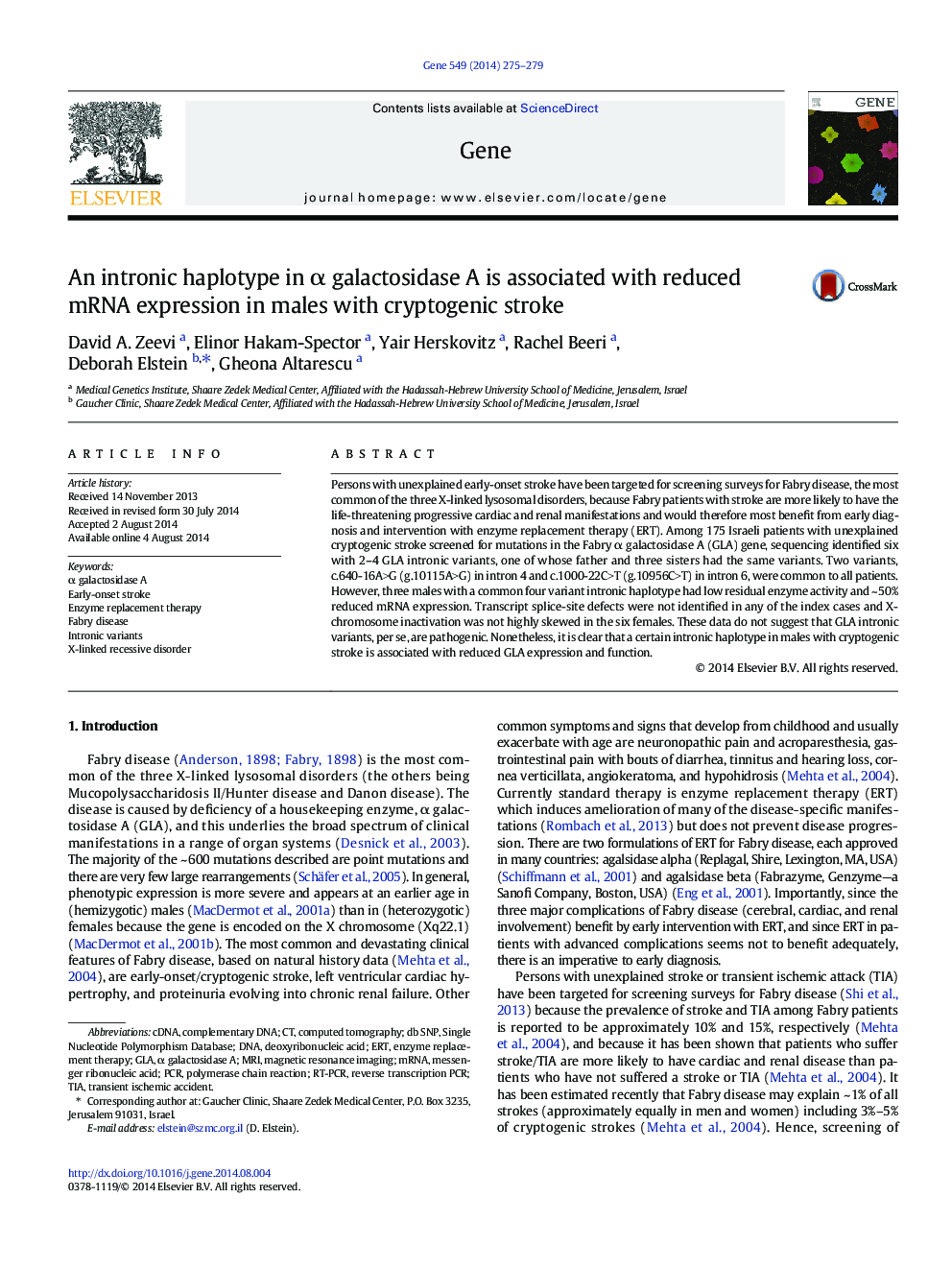| Article ID | Journal | Published Year | Pages | File Type |
|---|---|---|---|---|
| 2816167 | Gene | 2014 | 5 Pages |
•10/175 screened stroke patients had 2-4 intronic variants in the GLA gene.•Only males with a deletion in intron 2 had low residual enzyme activity.•Only these males had decreased mRNA expression but not classic Fabry disease.•X-chromosome inactivation was not highly skewed in the 6 females.•Aberrant epigenetic gene silencing may explain reduced GLA expression in males.
Persons with unexplained early-onset stroke have been targeted for screening surveys for Fabry disease, the most common of the three X-linked lysosomal disorders, because Fabry patients with stroke are more likely to have the life-threatening progressive cardiac and renal manifestations and would therefore most benefit from early diagnosis and intervention with enzyme replacement therapy (ERT). Among 175 Israeli patients with unexplained cryptogenic stroke screened for mutations in the Fabry α galactosidase A (GLA) gene, sequencing identified six with 2–4 GLA intronic variants, one of whose father and three sisters had the same variants. Two variants, c.640-16A>G (g.10115A>G) in intron 4 and c.1000-22C>T (g.10956C>T) in intron 6, were common to all patients. However, three males with a common four variant intronic haplotype had low residual enzyme activity and ~ 50% reduced mRNA expression. Transcript splice-site defects were not identified in any of the index cases and X-chromosome inactivation was not highly skewed in the six females. These data do not suggest that GLA intronic variants, per se, are pathogenic. Nonetheless, it is clear that a certain intronic haplotype in males with cryptogenic stroke is associated with reduced GLA expression and function.
